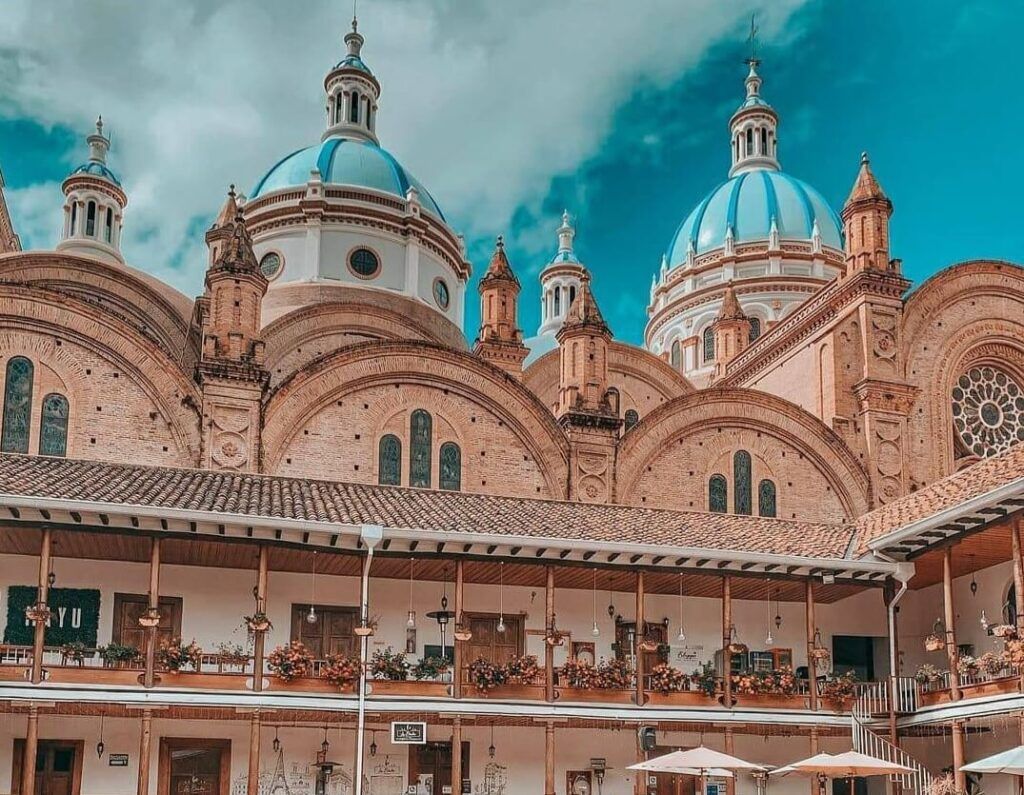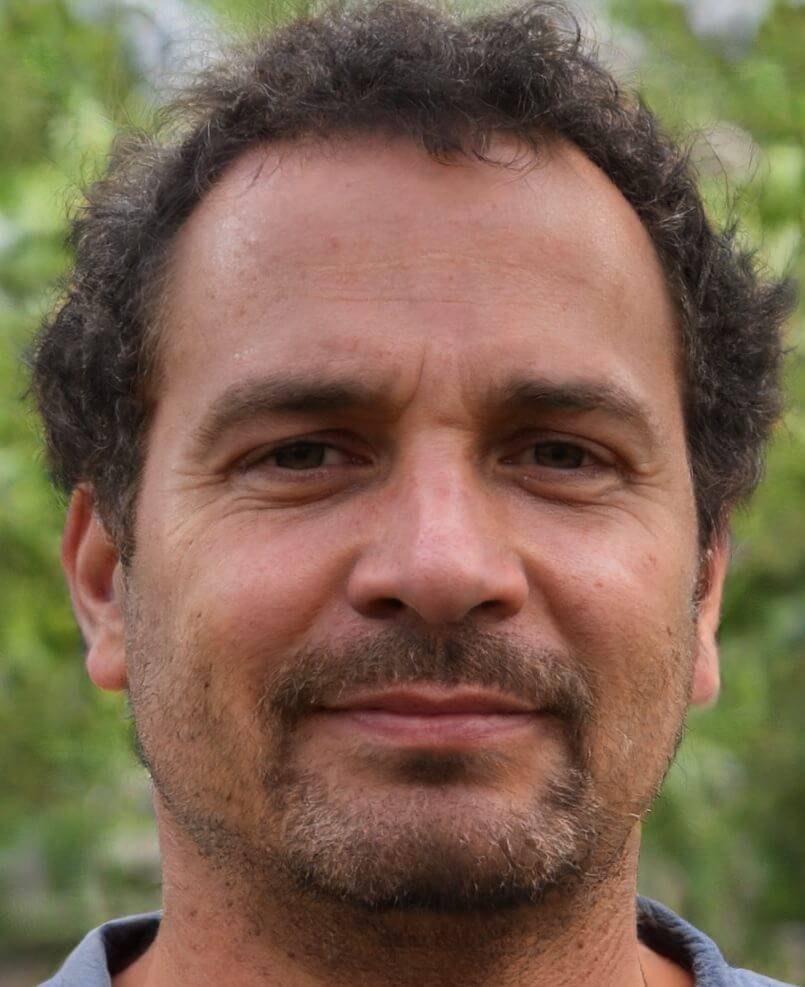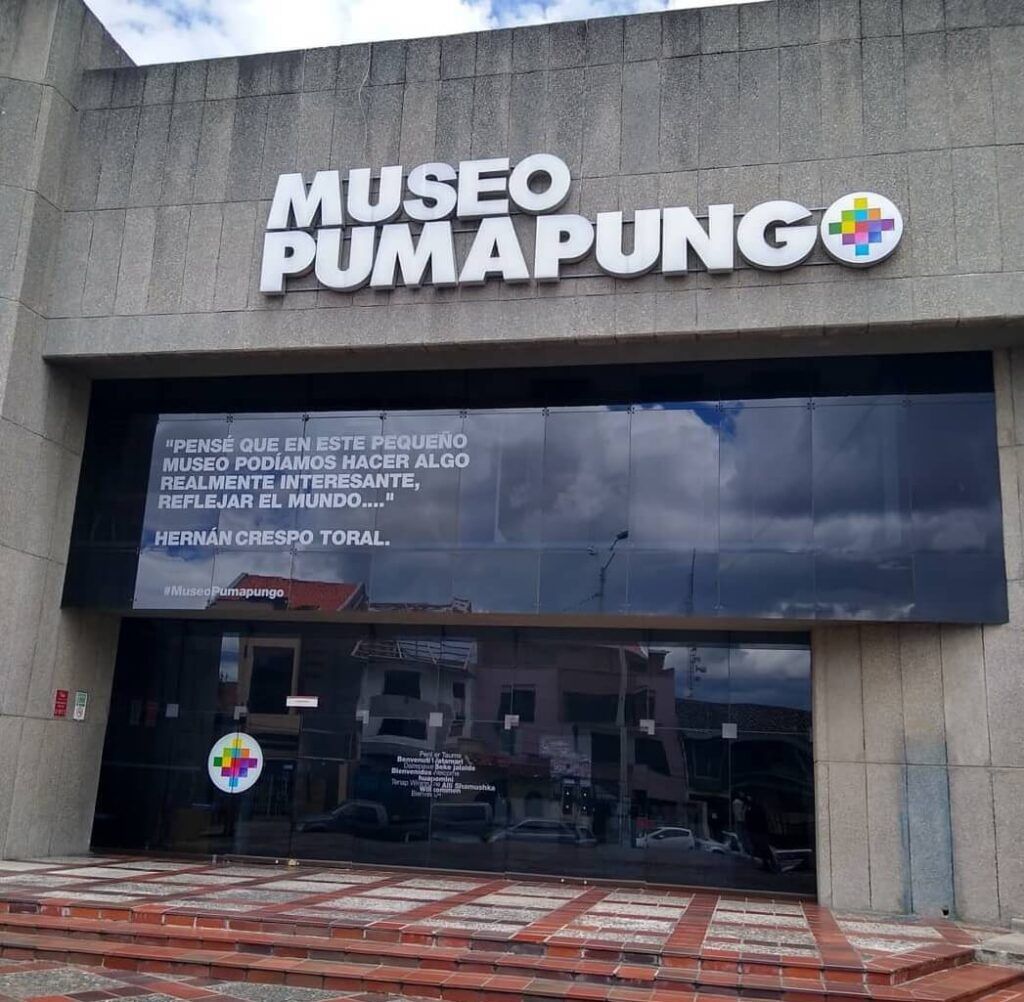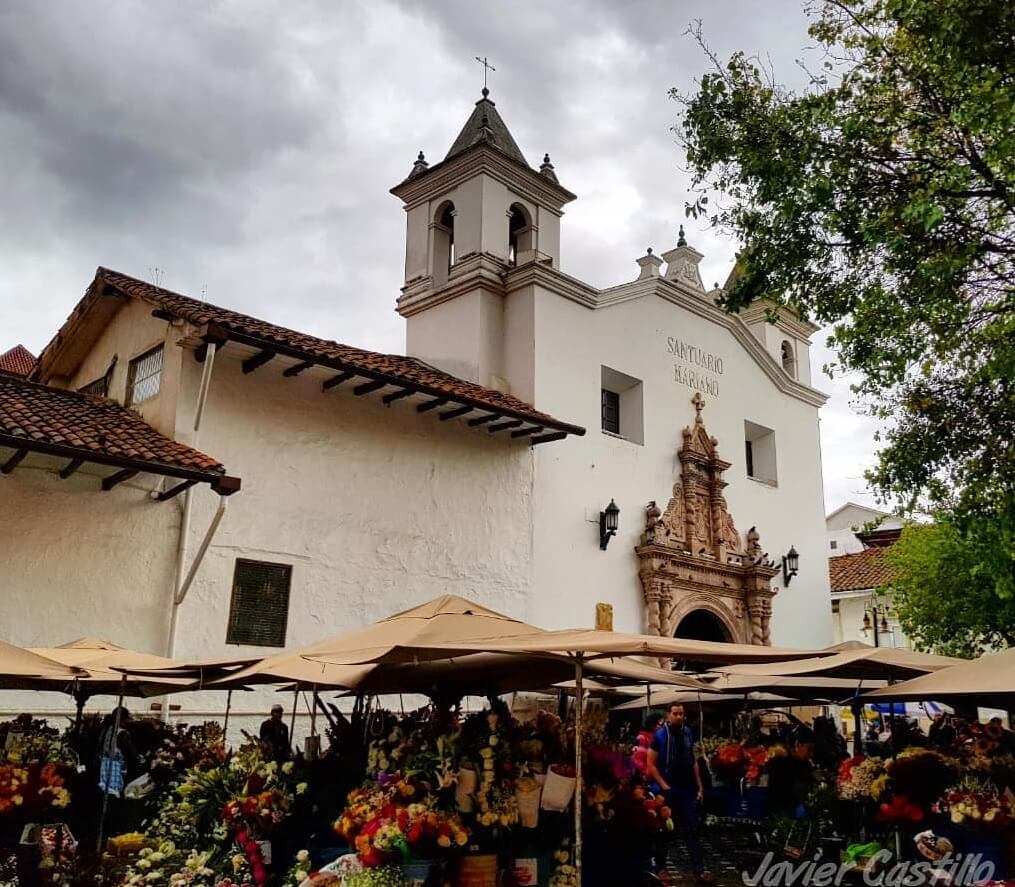15 Exciting Things To See & Do In Cuenca, Ecuador


Paolo is a native of Baños de Agua Santa, a city in Ecuador’s incredible interior. Although to many this city represents the heart of a hidden gem, to Paolo it is a lifelong home and labor of love. He shares his insight as a travel guide with a particular emphasis on the extraordinary nature and outdoor activities that attract visitors to the region.
In this city, you will find a mixture of pretty colonial architecture and stylish, modern houses. One of Cuenca’s distinguishing features is the use of red brick in buildings, giving the city an appealing aesthetic. The public parks of Cuenca are gorgeous and beautiful thermal baths and local food markets make the area popular with intrepid tourists. Cuenca is definitely a city worth stopping in if you have sufficient time. Cuenca can be reached from Quito (Terminal Quitumbe) or Baños easily by bus.
The journey is substantial at around 7 hours from both cities but is very affordable at approx. 12 dollars. From Guayaquil, the journey takes about 3.5 hours and costs about 8 dollars. Visitors from Peru often arrive in Ecuador via Cuenca due to its proximity. There are direct night buses from Peru to Cuenca and vice versa.
Table of Contents
An Introduction to Cuenca
From Baños, the bus ride to Cuenca takes about 7 hours. Depending on your preference, you can still spend the whole day in Baños and then take a night bus to Cuenca to arrive at 6 am in the morning. If you don’t like night buses, leave Baños before lunchtime. Most hostels in Cuenca only allow check-in until 9 pm. Be sure to book a bus that goes directly to Cuenca without going to Quito first!
Once in Cuenca, be prepared to get up early in the morning (or, if you took a night bus, drop your luggage at your accommodation) and then drive to Cajas National Park for a half-day trip. Marvel at the breathtaking black lakes and green mountain peaks. In the evening, you can relax in one of the luxurious but affordable spas.
Another worthwhile excursion is the drive to Montañita. In the morning, you still have time to stroll through the city center of Cuenca and browse the craft markets and visit some of the free museums. Enjoy a delicious lunch and fruit juice at one of the markets. Then, around 2 pm you should take a bus (via Guayaquil) to Montañita. If you want to visit Galapagos, this would be a good means of linking your journey together, as most flights to the Galapagos stop in Guayaquil.
If you’re not flying to the Galapagos you’ll remain on the bus and arrive in Montañita in the evening. If it’s a night between Wednesday and Saturday, you can already plunge into the party life (if such activities appeal to you!).
Back to Cuenca, however. Take note of the fact that it can be quite difficult to find a restaurant or hostel after 9:00 p.m. as everything is closed (so keep this in mind when you arrive). Nevertheless, the city is completely enchanting. There are several art museums in Cuenca and most all are free to enter.
The Panama Hat Museum is also a quirky local venue well worth a short visit. If you like vintage jewelry, ruins, and llamas, you should go to the Pumapungo ruins. They are located downtown and are therefore within walking distance of most hotels and hostels. It is a museum as well as an outdoor park with animals. Like the other museums, you can enter it for free. Address: Calle Larga and Huayna Capac Esquina. Closed on Mondays. Tue – Fri: 9.00 am – 5.00 pm and Saturday/Sunday: 10.00 am to 4.00 pm.
Enjoying the famous thermal baths is another must-do activity in Cuenca. Agua de Piedra is among the best thermal baths in the world. Their normal price is considerable at $35 but they sometimes offer “2-for-1” deals, and the walking tour includes a steam sauna, two hot mud pools, a hot and a cold pool in a candlelit cave, a steam box and a warm relaxation pool. A taxi from downtown Cuenca costs between $5 and $6.
Turi viewpoint is probably the best place in Cuenca to enjoy a stunning birds-eye view over the “Red Sea of Bricks”. Take a bus from the corner of 12 de Abril and Solano to get there and back, otherwise you’ll have to somehow find your way around a steep wooded area (for example, past the Mall of Rio, which is quite a detour). You’ll need a card for the bus, but if you talk to locals, they too can pay for you and you give them the fare (only 30 cents or so).
If this sounds too complicated, ask your hotel/hostel manager if there is a closer bus stop with a bus to Turi viewpoint or join the hop-on-hop-off tour ($10) that will take you to many of the city’s major attractions. Take time to stroll along the river and relax in the parks. There are plenty craft markets and inviting outdoor squares to enjoy too. If you’re with children, the planetarium (Parque de la Madre) has a nice playground.
After Quito, Cuenca is the most important and beautiful colonial city in Ecuador. But don’t tell the locals, who insist that its relaxed culture, cleaner streets and more pleasant climate surpass the capital, without doubt!
Dating from the sixteenth century, the historic center of Cuenca, a Unesco World Heritage Site with its characteristic horizon of huge roundabouts and towering bell towers, is a place that time forgets: nuns parade through the cobbled streets, children in Catholic school uniforms overlook historic churches, and the elderly relax on benches underneath balconies full of geraniums.
The city is the center of many artisanal traditions, such as ceramics, metalwork and the famous Panama hat. The nearby villages offer many more handicrafts in addition.
Places of Interest In Cuenca
Central Bank Museum ‘Pumapungo’

One of the most important museums in Ecuador, Pumapungo houses great modern art on the ground floor, but the highlight is on the second floor. There you’ll find a complete journey through the diverse indigenous cultures of Ecuador, with colorful animated dioramas and reconstructions of typical houses of Afro-Ecuadorians of the province of Esmeraldas, the montubios (coastal farmers) of the western lowlands, and various jungle and highlands groups.
It offers great insight into the historical and cultural heritage of the area. Be warned, the ending features strange and mysterious tzantzas (shrunken heads) from the Shuar culture of the South East.
Considered the most important museum in Cuenca, the Pumapungo Museum deserves a visit for the labyrinthine ethnographic exhibition. A whole floor of colorful animated exhibits shows the traditional costumes of many cultures of Ecuador, including the Afro-Ecuadorians of the province of Esmeraldas and the montubios-cowboys.
Museum of Aboriginal Cultures
This museum of indigenous culture has more than 5,000 archaeological pieces representing more than 20 pre-Columbian Ecuadorian cultures dating back about 15,000 years. The self-guided tour is excellent and touches on many unexpected artifacts like combs and obsidian mirrors, sophisticated cooking utensils, and more.
It’s a rarity among museums in that it enhances each exhibit with insight and information into the significance of its items. Finally, stroll back to the courtyard to see some fascinating historical photographs of Cuenca’s colonial life.
Located along Calle Larga, the Museum of Aboriginal Cultures also hosts a small gift shop and a bookstore.
City Museum
Located in the former Central School of the Immaculate, this beautifully preserved colonial building has been renovated with elegant and contemporary lines to house art exhibitions in its halls.
Museum of Modern Art
On the south side of St. Sebastian’s Square, this fun museum was once used as an asylum! It now houses a much-appreciated collection of Ecuadorian and Latin American art.
Turi Viewpoint

For a beautiful view of Cuenca, take a bus or taxi ($5) 4 km south of the city along Solano Avenue to “Mirador de Turi”. The views of Cuenca’s famous and romantic skyline are especially beautiful at sunset and during the months of November and December, when the city turns on the famous Christmas lights.
There is also a double-decker city bus that goes via Turi, which departs every half hour from the north side of Calderon Park.
Inter-American Center for Popular Arts
One block from the Remigio Crespo Toral Museum, on the stairs to the river, the Inter-American Center for Popular Arts exhibits traditional indigenous costumes. You’ll also find crafts and works of art from all over Latin America. It has a craft shop and promotes many of its outstanding artists and craftsmen by selling their work.
The Tabernacle
The “Tabernacle” goes almost unnoticed thanks to the impressive Cathedral of the Immaculate Conception that is located nearby. Construction began in the mid-16th century, around the time Cuenca was founded. In the 1700s, it was used as a triangulation point by the La Condamine expedition to measure the shape of the Earth. It was visited in the 1980s by Pope John Paul II.
Remigio Crespo Toral Museum
Within one of the historic buildings on Calle Larga, the Museo Remigio Crespo Toral contains religious sculptures, colonial furniture, paintings, and an excellent selection of indigenous artifacts.
Orchids

If you have any interest in what many regard as the most beautiful plant species in the world, you will love the Orquideario at the University of Cuenca. With more than 400 species of orchids, it is hailed as one of the best in the country. Most of the plants are in bloom from December to May, it’s really a sight to behold!
Plaza de San Sebastián

The quiet Plaza de San Sebastián is dominated by the Church of San Sebastián — dating to the 1600s, it is one of the oldest churches in the city. The south side of the square is flanked by the Museum of Modern Art.
Tomebamba River

The Tomebamba River is a jewel of Cuenca and is the most important of the rivers that converge here. The river flows from the Cajas National Park, in the sector called “Tres Cruces”, and flanks the Historic Center of Cuenca en route to the sea. The iconic buildings along the Tomebamba River are listed, meaning they form an important part of the city’s cultural heritage.
FAQ
Cuenca is in the south of Ecuador and is the capital of the Province of Azuay. It is located at approx. 2,500 meters above sea level and has a population of almost half a million. The city limits cover almost 16,000 hectares of land.
What is the climate like in Cuenca?
Temperature-wise, Cuenca enjoys a stable and mild climate with relatively little seasonal variation. Its position in the highlands has a cooling effect. Daily mean temperatures vary from 13 to 16 degrees celsius. The rainy season falls between late January and early May.
The beautiful valley in which the city is located is near to four main rivers: the Tomebamba, Yanuncay, Machangara, and Tarqui. Each river crosses near or through Cuenca from east to west.
Cuenca is among Ecuador’s most prized cities. Its reputation is based on the richness of its architecture among other things.
What is there to do in the historic center of the city?
The Historic Center of the city of Cuenca is also among the oldest colonial residential areas in Ecuador. It is home to most of the prized churches, the archaeological zone, the artisan neighborhoods of colonial origin (bakeries, etc.), the central markets, the Barranco del Tomebamba and several sites of cultural significance.
What about adventure tourism?
Ziplining is available around Via a Bibin, accessible via Ricaurte on a 7 km journey. The ziplines were installed by a team of experts from Costa Rica. Tour guides are bilingual and experienced. The ziplining company provides all the necessary equipment.
Climbing is growing in popularity in Cuenca rapidly. The nearby Cajas National Park, the Sayausi sector, or the Cojitambo hill, are all places where you can enjoy climbs of varying difficulty and complexity. As an added bonus, you also get to soak up wonderful scenery! Local tour operators offer qualified guides and suitable equipment if needed.
Churches of Cuenca
Cathedral of the Immaculate Conception (New Cathedral)
The Cathedral of the Immaculate Conception, better known as “New Cathedral”, began its excavation for construction in the late 19th century. Later, in the 1930s, the crypt was completed. The marble underfoot and the stained glass rose windows of are of German origin. The Baldaquino is carved in cedar and decorated with gold leaf. In the 1950s, the ordination of the First Archbishop of Cuenca took place here. At present, the New Cathedral remains open in the morning and in the afternoon from Monday to Friday for all the faithful who wish to visit it. Remember to show respect for worshippers with silence and peace.
Also of note is its giant dome, made of blue Czech tiles, which is visible from all over Cuenca. Notably, the church’s belltowers are unusually short — this resulted from a design error but has become iconic in its own right.
Las Conceptas
The best religious museum in Cuenca is located in the Convent of the Immaculate Conception, which was founded approx. 1600. The infirmary chapel has an exhibit of fine crucifixes created by a local 19th-century sculptor. Other parts of the building display a variety of religious paintings, sculptures, statuettes, nativity scenes, and other works of art.
The Church of the Conceptas began its construction in the late 1600s. The exterior is highly minimalist but the interior is home to a stunning altar in the Baroque style, carved and covered with gold leaf. The entrance of this church has stones dating from the seventeenth century. It also has at its center a sculpture depicting the Holy Trinity. It is one of the two oldest churches, dating back to the beginnings of Cuenca’s settlement.
Meanwhile, the Monastery of the Conceptas was built in the sixteenth century and has become a museum of Religious Art.
The Church of Santo Domingo

With its imposing height, the Church of Santo Domingo is regarded as the second most important church in the city of Cuenca. The original temple was erected in the 1500s, but was rebuilt at the beginning of the 1900s. What attracts the eye is its domes and lanterns of oriental style. Its architectural style is defined as a fusion between the moderate style of the exterior and the Baroque style of the interior. The church celebrates the festivities of the Virgin of the Most Holy Rosary (The Virgin Morenica) in the month of October.
El Carmen de la Asunción

El Carmen is a very cozy and old church, popular with tourists and locals alike for its quaint, pretty looks. It was built in the 1700s in colonial style and its façade is adorned by an elegant doorway carved in stone. You’ll also find stunning columns that frame the door alongside the images of San Pedro and San Pablo.
It is located in the Plaza de las Flores. Inside the Church we can see the beautiful colonial altarpiece of neoclassical style and the pulpit covered with gold leaf and mirrors. Also striking is the ceiling with its wall paintings.
Although its doors are rarely open to the public, the Church of El Carmen de la Asunción remains a beautiful site and a must-visit for any tourist to the area. It is greatly enhanced by the presence of a colorful flower market, held in the small Plazoleta del Carmen.
Other interesting churches include the 19th-century church of San Cenaculo (Bolivar and Montalvo). It can be found two blocks east of the Plaza de San Sebastián. One block north of the church is Gran Colombia, the main craft and shopping street of Cuenca. An emblematic building of the street is the Church of Santo Domingo, which has fine wooden doors and colonial paintings inside. Although it looks old, the church was actually built in the early 20th century.
Old Cathedral (Religious Museum)
The oldest church of Cuenca is simply known as “the Cathedral” or “Old Cathedral”. It was constructed by Spanish settlers at the very beginning of Cuenca’s development. Carved stones brought from the ruins of Inca buildings served as the foundations and the bases of the walls. The church was open by the mid-1500s.

